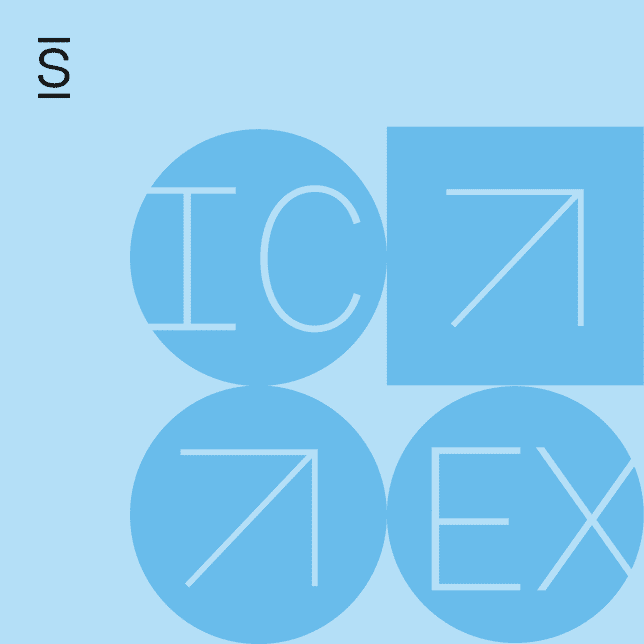This article was originally published on Mister Editorial.
Your role changes throughout the week and even throughout the day. This is comms, after all. We wear many hats. Sometimes you are the creator. Sometimes you’re the strategist. Sometimes you’re the boss. Sometimes you’re bossed.

The internal communications professional wears many hats.
Artificial intelligence (AI) can help communications professionals become more efficient, productive and creative in their roles. When it comes to using AI to get ahead, the trick is to know which hat you’re wearing, so you can get AI into the same mindset.
Here, I introduce you to four personas — or use cases — you can adopt when turning to AI for assistance:
For each persona I provide examples of when to adopt the character and a couple of AI tools to try. (Hey ho, let’s go.)
Get your free ebook: Revolutionize the employee experience with an AI-powered EX platform
AI as a Creator

Sometimes the internal comms pro is an artiste.
The first and most obvious AI persona is that of the Creator, which generates content and creative solutions in the form of text, graphics, videos and other multimedia. The Creator is also helpful for brainstorming.
This persona lets you produce content at scale. The Creator also suggests novel ideas that might not be immediately obvious to you, the human creator.
The Creator delivers a wide range of content, including text (e.g., emails, reports, blog posts), documents (e.g., presentations), visual assets (e.g., images, designs, video), and innovative ideas for projects or problem-solving (e.g., lists, mind maps). For instance, a Creator AI might produce a monthly news wrap-up, design engaging graphics for an internal campaign, or generate a series of potential solutions for a comms challenge.
When to use the Creator
Content creation: For first drafts of intranet stories or internal memos, creating engaging multimedia content for training, and generating reports.
Enhancing creativity: When you need to brainstorm ideas for projects or campaigns, the Creator can provide suggestions and inspiration.
Examples:
- Ask ChatGPT for several ideas to celebrate Earth Day at work.
- Ask DALL-E to create an image that reflects your Earth Day theme. (I used DALL-E to create the images in this article.)
- Use Lumen5 to create dynamic videos and animations from text.
Check out our IC cheatsheet for optimizing AI prompts
AI as an Assistant

Sometimes the internal comms pro is in support mode.
The Assistant persona enhances productivity and efficiency in administrative tasks. This AI character is a digital helper that automates or speeds up time-consuming and repetitive tasks.
The Assistant is all about enabling you to focus more on higher-value activities by handling or streamlining the boring overhead stuff.
The Assistant provides everyday support such as sharing meeting notes, setting up reminders, replying to frequent queries (e.g., I need an intranet story on…), summarizing reports, and so on. Admittedly, the Assistant may be the most difficult persona to implement because the tools work best when they are integrated into your internal systems, such as Google Workspace, Microsoft products, and intranet platforms.
When to use the Assistant
Streamlining communication: Use AI to facilitate communications within the comms team, summarize meetings and action items, and send reminders to improve productivity.
Eliminating repetitive work: Implement AI chatbots for instant responses to common inquiries, thereby reducing low-value workload.
Examples:
- Integrate AI chatbots into your intranet platform that can handle frequently asked questions.
- Use translation tools like Google Translate to ensure communications are accessible to all employees, regardless of their primary language.
- Ask Google’s Gemini to create surveys or polls to gather team preferences for meeting times, lengths, topics, and preferred platforms.
- Use Microsoft’s Copilot in Teams to generate meeting notes and list action items.
- Use Taksade to convert brainstorming sessions into mind maps and then track your progress across a project.
Use Slack to automate routine announcements or reminders.
Learn more about Simpplr’s AI Assistant
AI as an Analyzer

Sometimes the internal comms pro needs to mine data.
The Analyzer focuses on understanding and interpreting data. The Analyzer specializes in dissecting and understanding gobs of information, which is especially useful when trying to understand patterns, extract insights, and make data-driven decisions.
The Analyzer is all about digging into communication patterns, employee feedback, engagement metrics, and other sources of data to identify trends, sentiments and behaviors.
The Analyzer provides detailed reports, insights and visualizations that show what’s happening in your comms world. The outputs are often descriptive and diagnostic. For instance, an Analyzer might reveal that employee engagement spikes during certain types of internal events or identify specific topics that generate a lot of discussion in chat rooms.
When to use the Analyzer
Evaluating campaign effectiveness: After running an internal campaign, the Analyzer can assess the effectiveness of different channels, messages, time of day, format, associated people (e.g., memos from CEO vs. dept. heads v.s generic mailboxes [boo!]), and other attributes. By analyzing engagement metrics, feedback and reach, comms pros can understand what resonates with their audience and why.
- Examples: Just like with the Assistant use case, this kind of work is best done with a tool that’s integrated into your internal platforms. Tableau helps visualize data from different channels, for example, while Adobe Analytics provides predictive analytics.
Understanding your employees: Use AI to perform sentiment analysis on feedback from employees. This can reveal how your coworkers feel about your organization, products and services, strategy, confidence in leadership, etc. You can also use sentiment analysis for specific issues (e.g., unionization, DEI activities), guiding how you communicate about these programs.
- Examples: MonkeyLearn has an easy-to-use platform that can classify text as positive, negative or neutral. The Sentiment Analysis Classifier app for ChatGPT gives you cool feedback, such as which specific words are positive, negative or neutral.
Optimizing content: By analyzing which types of content generate the most engagement or the best outcomes (e.g., acting on calls-to-action, engagement metrics like shares and comments), the Analyzer helps refine content strategies. This can include determining the best times to post, the most effective formats, headlines/subject lines, or topics of interest to your employees.
- Examples: Grammarly offers grammar checking, style editing, and suggestions to improve the clarity of written content. Survey Monkey uses AI-driven analytics to interpret results and suggest improvements.
AI as a Strategist

Sometimes the internal comms pro calls the shots.
The Strategist uses insights to inform future strategies, tactics and decisions, looking ahead to shape the direction of your comms.
This persona uses the insights gained from data analysis (potentially provided by the Analyzer) to forecast trends, suggest interventions, and guide decision-making processes.
The Strategist delivers … um … strategic recommendations, action plans and predictive insights. The outputs focus on what should be done to achieve outcomes. For example, based on the results provided by the Analyzer, a Strategist might recommend specific changes to communication channels or content to improve employee engagement based on predictive modeling.
When to use the Strategizer
Making data-driven decisions: Use AI to analyze communication patterns, employee engagement levels and feedback to improve content strategies.
- Examples: If you’re a Microsoft shop, you can use Power BI to create detailed reports and dashboards that help track the success of your comms campaign and identify areas for improvement (e.g., which audiences are ignoring the content, which headlines perform best). Tableau and Adobe Analytics can provide similar outputs and insights.
Making predictions: AI can help forecast potential internal issues or identify trends that could affect productivity and morale.
- Examples: Slack provides useful data like engagement with different channels, so you can see which hot-button issues are gaining traction. BuzzSumo can be used to understand which topics are trending in your industry, which can inform internal communications and keep content relevant and engaging. It’s more external-focused but you can leverage it for internal content ideas.
Once you have the analysis and understand the tactical or strategic shift you need to take, you can then turn to a platform like ChatGPT to generate ideas to support the shift.
- Example: Ask ChatGPT to “Construct analogies or metaphors to help me better communicate the key aspects of [Idea, Program]. Create simple, relatable comparisons that capture the essence of the idea and make it more accessible. Use everyday scenarios [or examples from our industry] to illustrate the various components. Ensure the analogy or metaphor helps clarify [the program’s/idea’s complex aspects], making them easier to grasp and explain to others. Add a quote from our [exec leader] that explains ‘what’s in it for me?’”
The above is an example of an optimized prompt. To learn how to do this kind of prompting, check out the five-part introductory series on Mister Editorial and this cheatsheet with examples.
Implementation tips

AI can wear many hats.
Just like the internal comms pro, AI is versatile. And just like comms-rades change “roles” throughout the day and week, so must AI to be used effectively.
To recap, here are the four personas we’ve discussed:
- Creator: Ideal for content creation, such as drafting internal memos, writing first drafts of articles or newsletters, designing multimedia content, and brainstorming project ideas.
- Assistant: Beneficial for streamlining communication, eliminating repetitive work, and handling common queries.
- Analyzer: Useful for evaluating campaign effectiveness, understanding employee sentiments, identifying trends, and optimizing content.
- Strategist: Helpful in making data-driven decisions, forecasting internal issues, and identifying trends that could change the way you communicate with your audience.
When you explore AI solutions, make sure they align with the task at hand, and you will become more effective, efficient and productive in your role.














